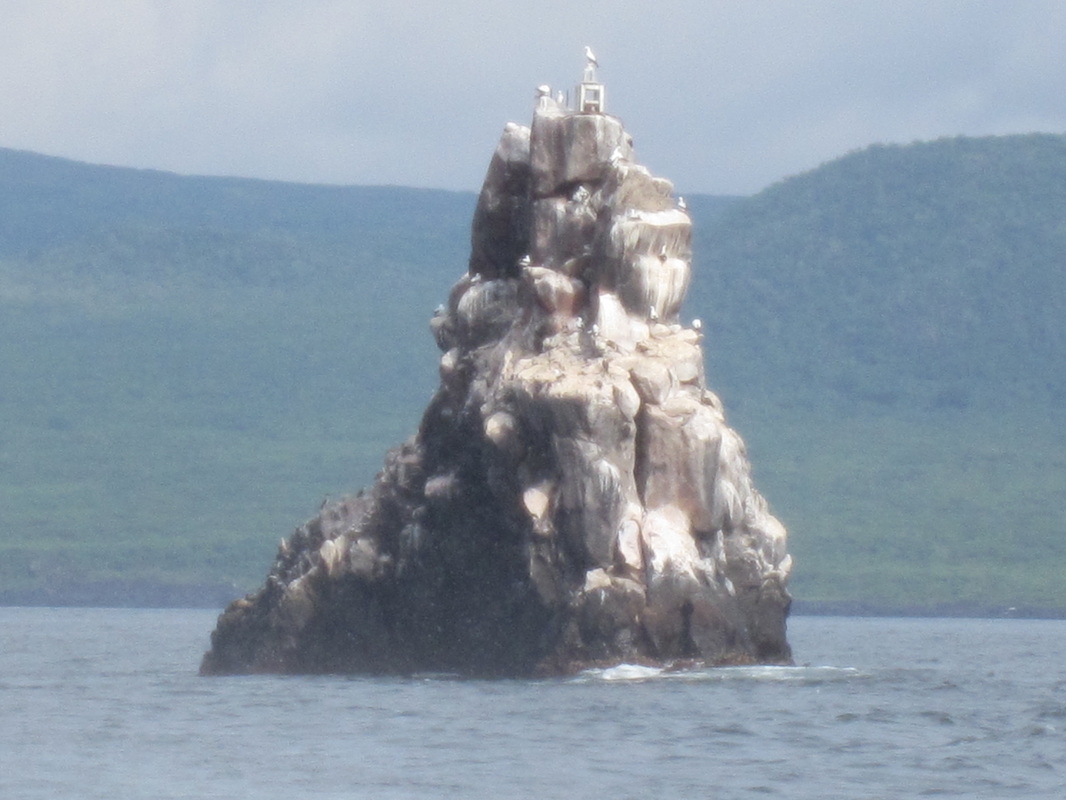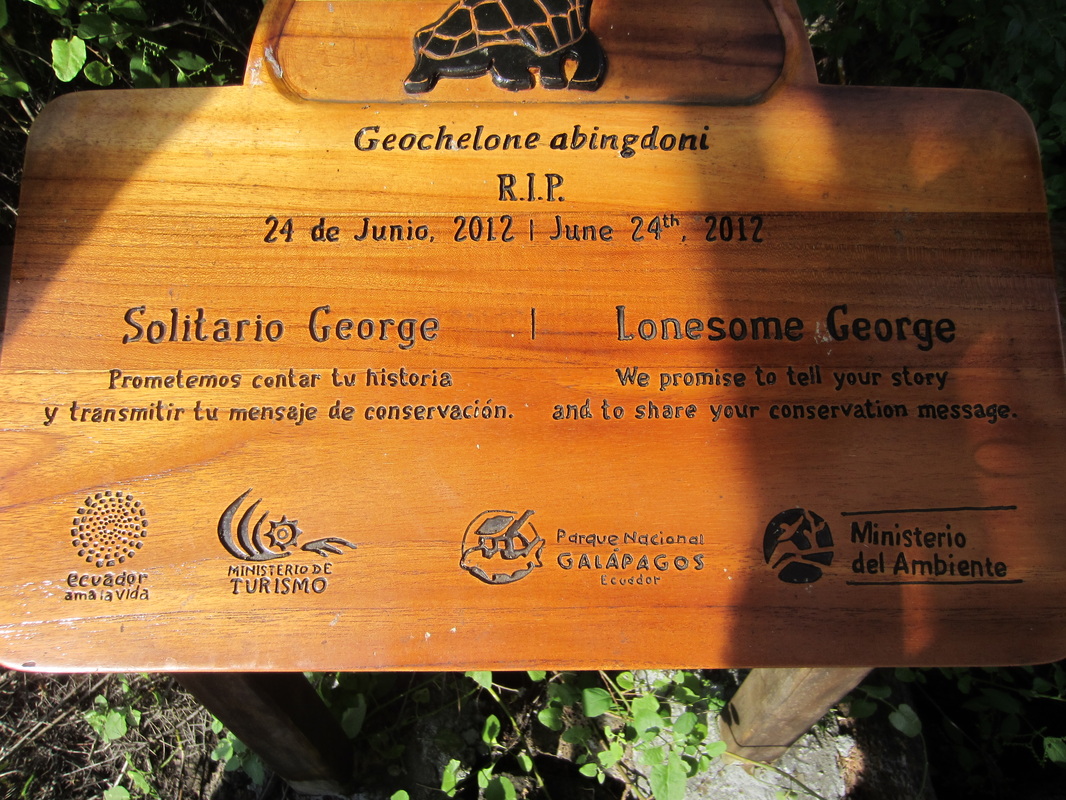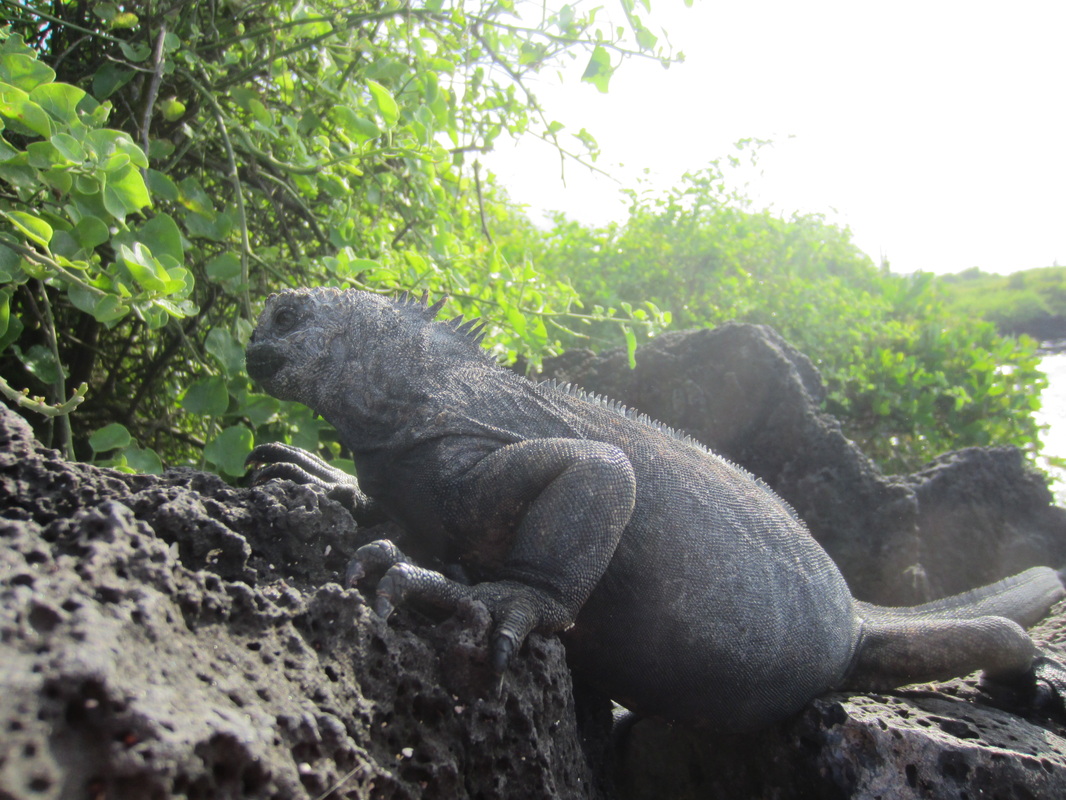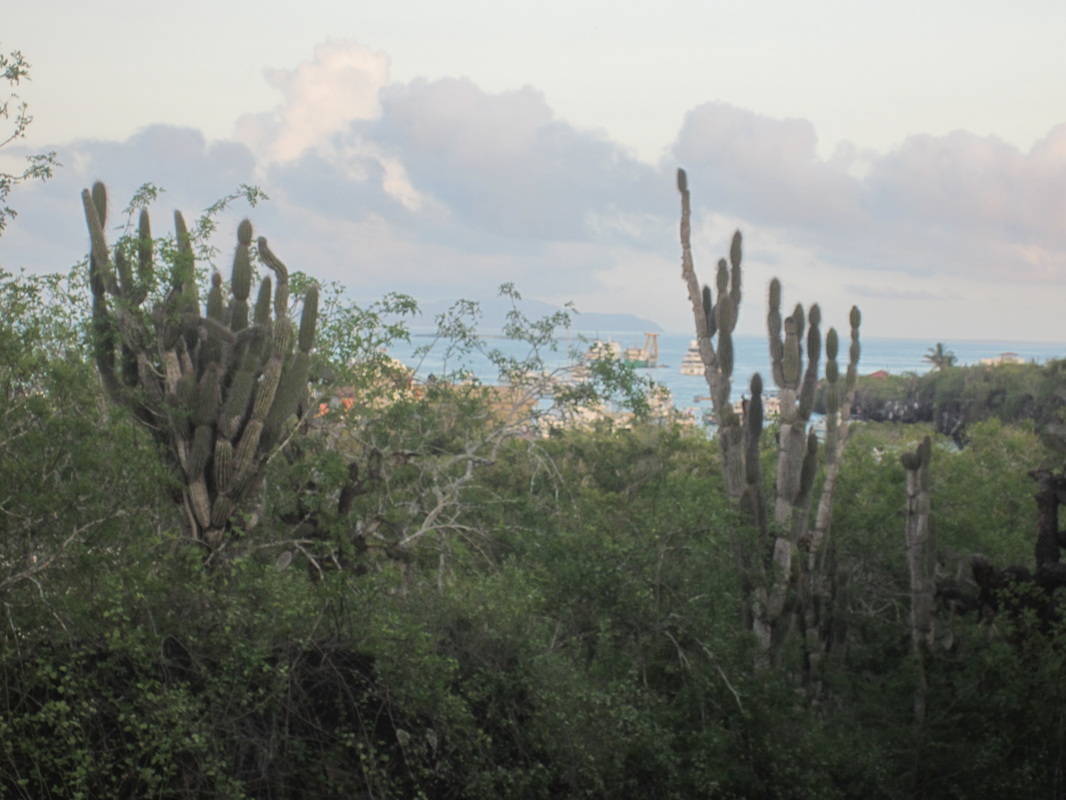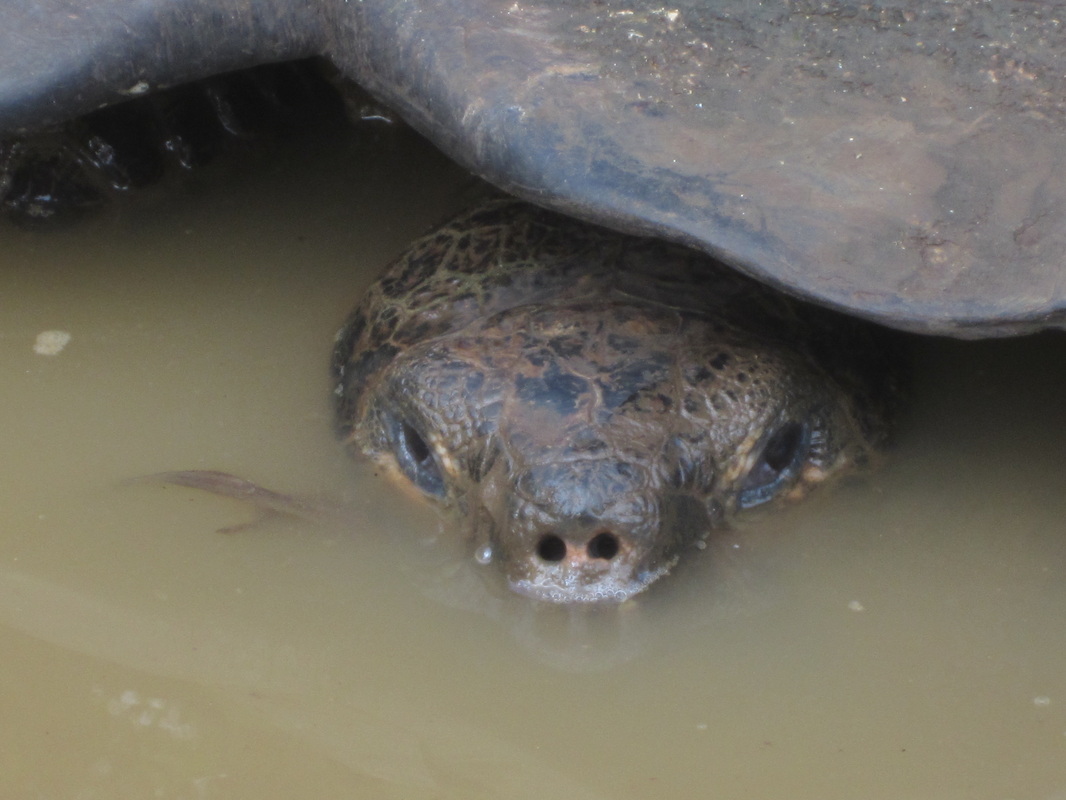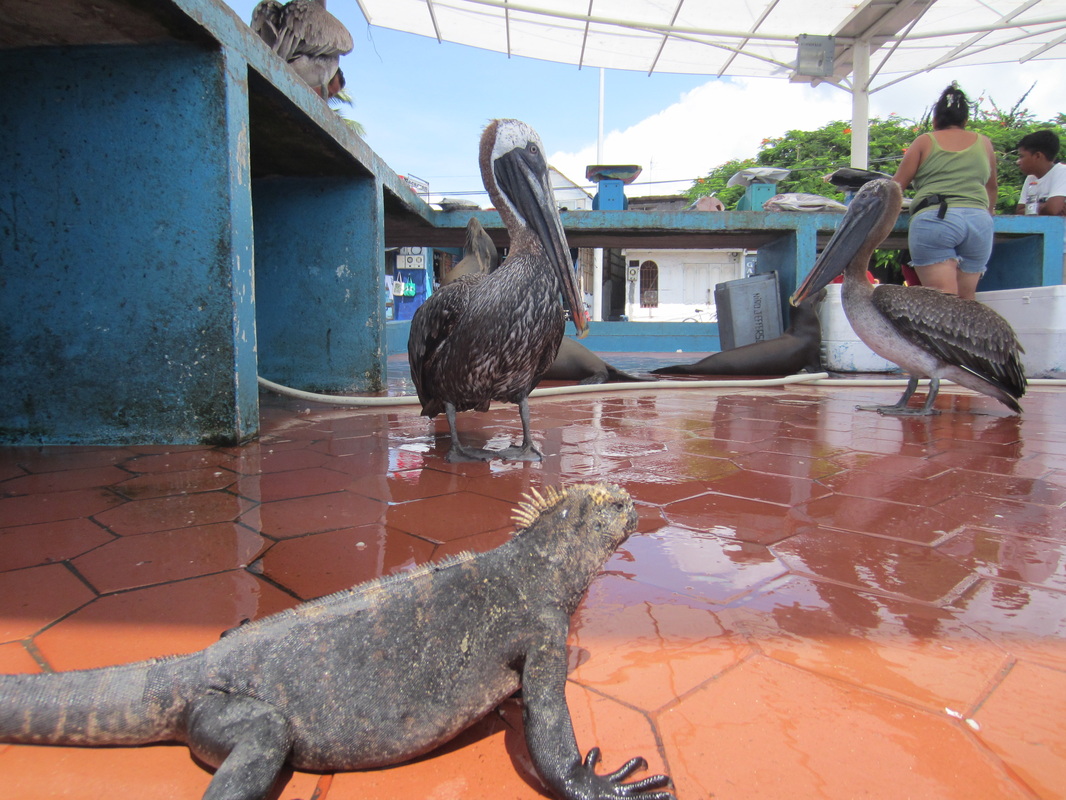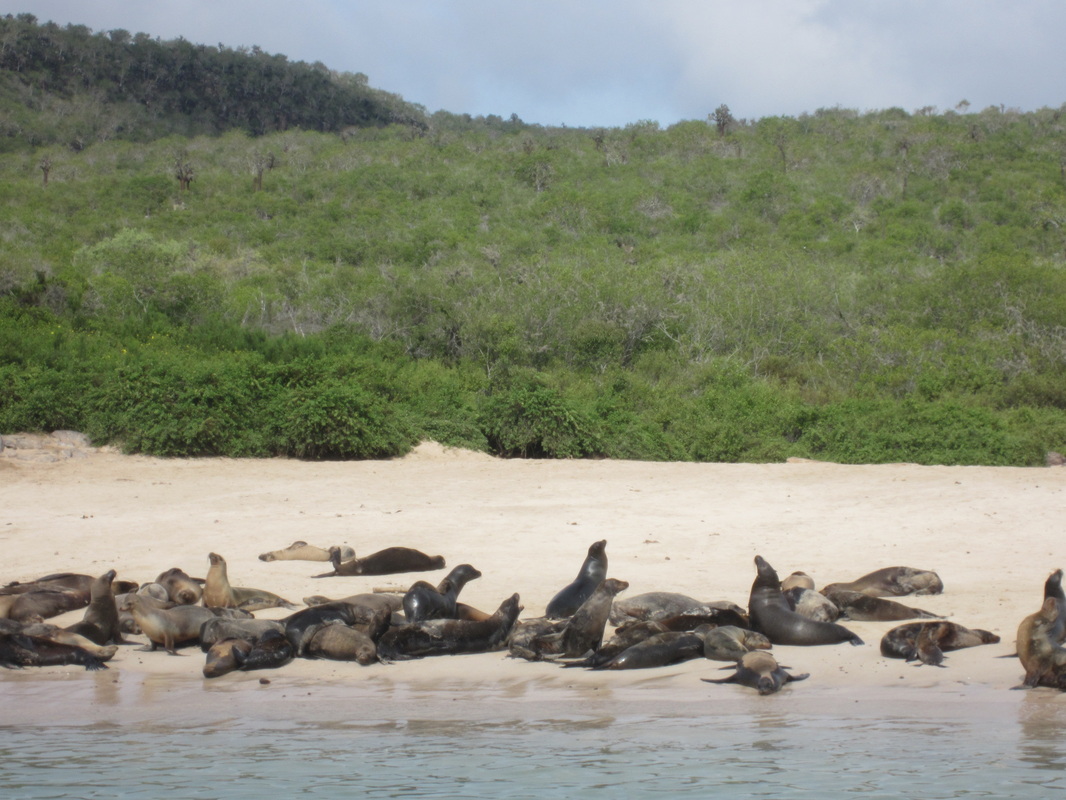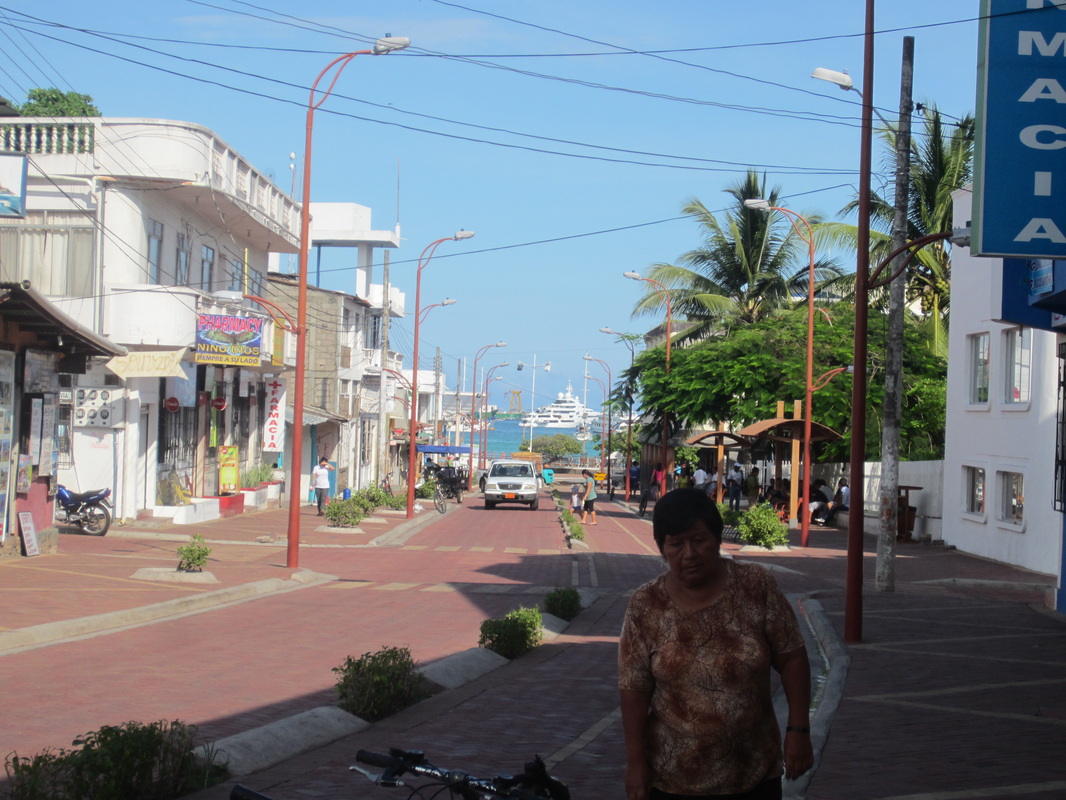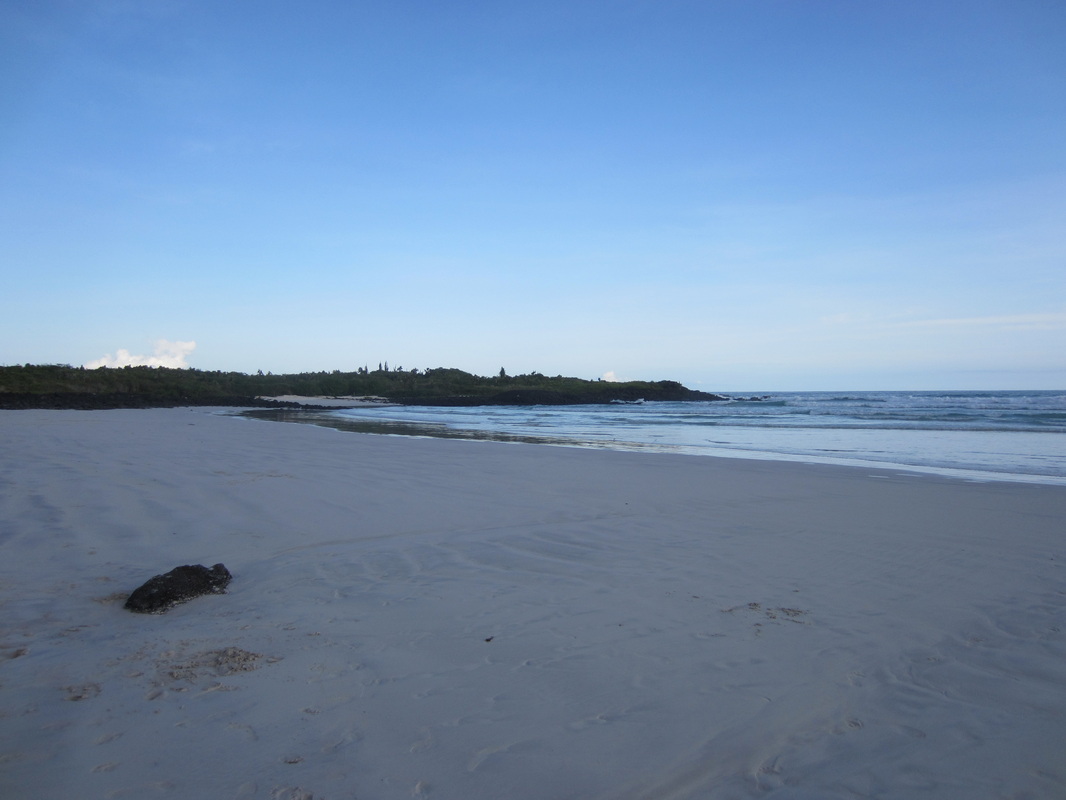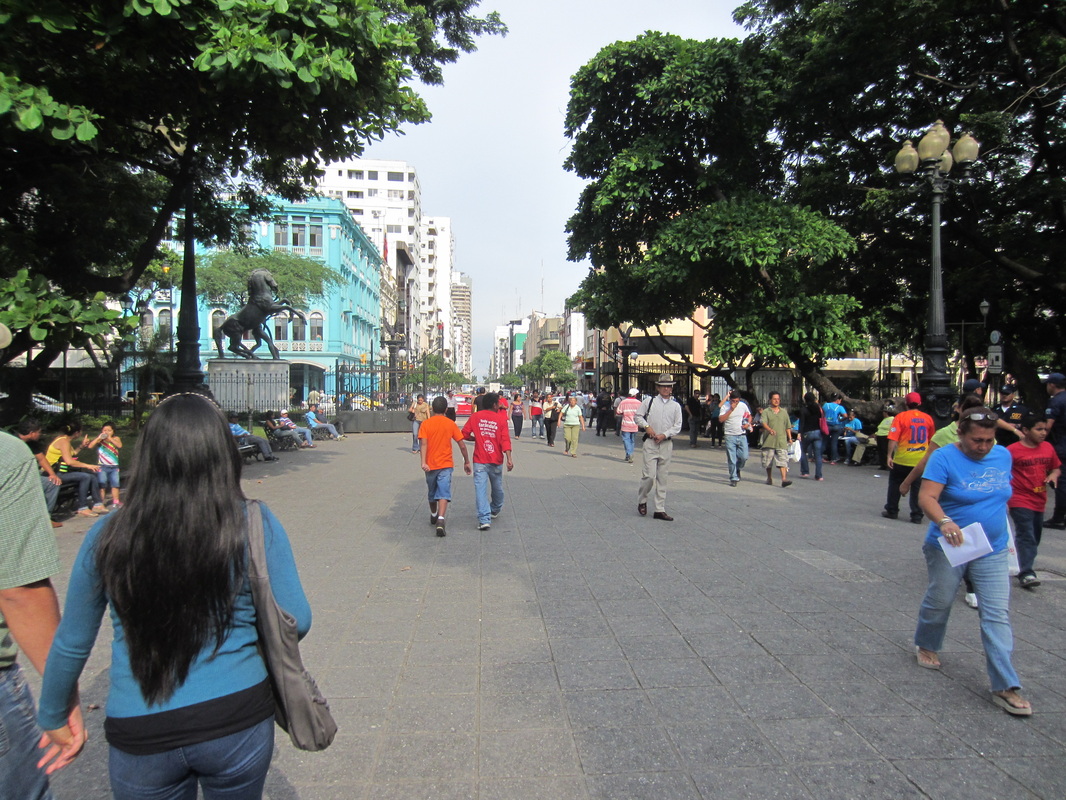Galapagos Islands
Excitement would best describe my state on the thought of visiting these islands.
The 4 hour bus trip south from Manta revealed what lay ahead on the road for me, though I find it’s best not to absorb to much detail as it spoils any potential surprises one may have whilst cycling the same road.
Arriving in Guayaquil at lunchtime, the plan was to stay the night there. The Sander hotel, almost opposite the central park was booked. The afternoon was spent relaxing and having a browse about the park and a few snacks.
The city is the largest in Ecuador and is pretty much a working city. Some say it can be a dangerous place, like all cities if one finds themselves in the wrong situation. However, the hotel did have a handout about safety precautions, most of it common sense. Interestingly it mentioned, do not let anyone help you if sauce or something is spilt on you. The scammers are good at their job!
The next morning a cab was caught to the airport and a few hours later we were touching down at Baltra airport, the small island is north of Isla Santa Cruz.
The sensation of being there was akin to that of climbing from the plane at Uluru in central Australia. Another world was awaiting.
First impressions were the aridity of the environment and the presence of large cacti plants, like prickly pear mutants some 20ft high.
A bus took us 10 minutes to a boat that in another 10 minutes had crossed the channel to Santa Cruz Island, from here 45 minutes and we were in the main town, Puerto Ayora.
The Francis Drake hotel was booked $25 a night with bay views and a big balcony.
The first observation made on wandering about near the shoreline was how quiet and unperturbed, the iguanas, sea lions, skinks, finches and rock crabs were of my presence. They were not in the slightest bit put off by my close proximity.
Many foreign yachts were at anchor in the bay, for now is the time to do the Pacific run to Australia or New Zealand and the islands on the way. Oyster yachts were having a rally here, a few of these in the bay abruptly upped the average value of the vessels present.
The next day was spent at the Darwin research centre where young tortoises are reared and realeased back to their race on their respective islands. Eggs are collected and incubated here. Each island race its own race of tortoises.
The food source present determines, their size. Interestingly all males have a concave shape on the base of their shell, otherwise mating would be like trying to join two inflated balls. Here they were eating the cacti, looking at their waste not a lot of it is digested.
A walk was taken to Tortuga bay where many people were surfing the uninterrupted swells rolling in from the south. These beaches are postcard perfect. The sand here was more like that in Australia, white, glary and plenty of it.
The ocean is relentlessly calm, due to the “doldrums” though with swells present.
“Sailors noticed the stillness of the rising (and not blowing) air near the equator and gave the region the depressing name "doldrums." The doldrums, usually located between 5° north and 5° south of the equator, are also known as the Intertropical Convergence Zone or ITCZ for short. The trade winds converge in the region of the ITCZ, producing convectional storms that produce some of the world's heaviest precipitation regions” Ref: about.com (geography)
Time was spent in the centre of the island observing tortoises in the wild, I would guess their hearts beat as many times in 200 years as ours do in 80 or so.
Believe me not one was in a hurry, using the word “hurry” in the same sentence as “Galapagos Tortise” is like trying to describe boiling water using the word “cold” as a description.
Lava tunnels were also visited. My cab driver unfortunately was more interested in his next customer than me taking my time.
A problem when a place has an endless number of short term new comers, 170,000 per annum to be precise.
Some snorkelling was done to beat one day that the heavens opened.
The last day a tour was booked, low and behold ,I bumped into Ferg and Simon from my time in Limoncocha, they too had booked the same snorkelling trip. We had an enjoyable day together but were a bit disappointed with the snorkelling. The highlight was swimming with Sea Loins at an island on the way to San Cristóbal to the east. They too were completely at one with our presence, as were a few turtles.
I guess snorkelling the Great Barrier Reef in many locations, one has been spoilt.
At Puerto Baquerizo Moreno, most seats around the foreshore were occupied by the most laid back bunch of creatures you could ever find, these sea lions had it made, seats, shade, attention and nothing to do chill all day, except super.
They were a bit on the nose at times, a diet of fish doesn’t do much for ones breath or excrement for that matter. Though the spectacle cancelled out any discomfort their personal hygiene may have caused.
A large part of the day was spent in the boat.
That evening we enjoyed a beer over dinner together away from the touristy restaurants.
My visit here was really only just a scratch on the surface of what was on offer. Unfortunately almost everything was way beyond my budget at this time, so the decision was made to get back to Manta a couple of days early and get focused on reality, which was riding south.
LAN were very obliging in allowing me to rearrange my departure, though charging me as I had booked a fare at a price only available to Ecuadorianos. The attendant said they would have nabbed me on departure anyway.
My advice to anyone coming here would be choose your excursions wisely and ask exactly what you are getting and where. For those snorkeling especially.
The less people on the island the better. Though the biggest, Isabella offers great swimming with turtles and sea lions.
My time here was pretty much introductory, one day I would dearly love to return with friends on a realistic budget and spend more time on the other islands.
It took a day to get back to Manta, my airbed had arrived. I could now move on at my leisure.
Excitement would best describe my state on the thought of visiting these islands.
The 4 hour bus trip south from Manta revealed what lay ahead on the road for me, though I find it’s best not to absorb to much detail as it spoils any potential surprises one may have whilst cycling the same road.
Arriving in Guayaquil at lunchtime, the plan was to stay the night there. The Sander hotel, almost opposite the central park was booked. The afternoon was spent relaxing and having a browse about the park and a few snacks.
The city is the largest in Ecuador and is pretty much a working city. Some say it can be a dangerous place, like all cities if one finds themselves in the wrong situation. However, the hotel did have a handout about safety precautions, most of it common sense. Interestingly it mentioned, do not let anyone help you if sauce or something is spilt on you. The scammers are good at their job!
The next morning a cab was caught to the airport and a few hours later we were touching down at Baltra airport, the small island is north of Isla Santa Cruz.
The sensation of being there was akin to that of climbing from the plane at Uluru in central Australia. Another world was awaiting.
First impressions were the aridity of the environment and the presence of large cacti plants, like prickly pear mutants some 20ft high.
A bus took us 10 minutes to a boat that in another 10 minutes had crossed the channel to Santa Cruz Island, from here 45 minutes and we were in the main town, Puerto Ayora.
The Francis Drake hotel was booked $25 a night with bay views and a big balcony.
The first observation made on wandering about near the shoreline was how quiet and unperturbed, the iguanas, sea lions, skinks, finches and rock crabs were of my presence. They were not in the slightest bit put off by my close proximity.
Many foreign yachts were at anchor in the bay, for now is the time to do the Pacific run to Australia or New Zealand and the islands on the way. Oyster yachts were having a rally here, a few of these in the bay abruptly upped the average value of the vessels present.
The next day was spent at the Darwin research centre where young tortoises are reared and realeased back to their race on their respective islands. Eggs are collected and incubated here. Each island race its own race of tortoises.
The food source present determines, their size. Interestingly all males have a concave shape on the base of their shell, otherwise mating would be like trying to join two inflated balls. Here they were eating the cacti, looking at their waste not a lot of it is digested.
A walk was taken to Tortuga bay where many people were surfing the uninterrupted swells rolling in from the south. These beaches are postcard perfect. The sand here was more like that in Australia, white, glary and plenty of it.
The ocean is relentlessly calm, due to the “doldrums” though with swells present.
“Sailors noticed the stillness of the rising (and not blowing) air near the equator and gave the region the depressing name "doldrums." The doldrums, usually located between 5° north and 5° south of the equator, are also known as the Intertropical Convergence Zone or ITCZ for short. The trade winds converge in the region of the ITCZ, producing convectional storms that produce some of the world's heaviest precipitation regions” Ref: about.com (geography)
Time was spent in the centre of the island observing tortoises in the wild, I would guess their hearts beat as many times in 200 years as ours do in 80 or so.
Believe me not one was in a hurry, using the word “hurry” in the same sentence as “Galapagos Tortise” is like trying to describe boiling water using the word “cold” as a description.
Lava tunnels were also visited. My cab driver unfortunately was more interested in his next customer than me taking my time.
A problem when a place has an endless number of short term new comers, 170,000 per annum to be precise.
Some snorkelling was done to beat one day that the heavens opened.
The last day a tour was booked, low and behold ,I bumped into Ferg and Simon from my time in Limoncocha, they too had booked the same snorkelling trip. We had an enjoyable day together but were a bit disappointed with the snorkelling. The highlight was swimming with Sea Loins at an island on the way to San Cristóbal to the east. They too were completely at one with our presence, as were a few turtles.
I guess snorkelling the Great Barrier Reef in many locations, one has been spoilt.
At Puerto Baquerizo Moreno, most seats around the foreshore were occupied by the most laid back bunch of creatures you could ever find, these sea lions had it made, seats, shade, attention and nothing to do chill all day, except super.
They were a bit on the nose at times, a diet of fish doesn’t do much for ones breath or excrement for that matter. Though the spectacle cancelled out any discomfort their personal hygiene may have caused.
A large part of the day was spent in the boat.
That evening we enjoyed a beer over dinner together away from the touristy restaurants.
My visit here was really only just a scratch on the surface of what was on offer. Unfortunately almost everything was way beyond my budget at this time, so the decision was made to get back to Manta a couple of days early and get focused on reality, which was riding south.
LAN were very obliging in allowing me to rearrange my departure, though charging me as I had booked a fare at a price only available to Ecuadorianos. The attendant said they would have nabbed me on departure anyway.
My advice to anyone coming here would be choose your excursions wisely and ask exactly what you are getting and where. For those snorkeling especially.
The less people on the island the better. Though the biggest, Isabella offers great swimming with turtles and sea lions.
My time here was pretty much introductory, one day I would dearly love to return with friends on a realistic budget and spend more time on the other islands.
It took a day to get back to Manta, my airbed had arrived. I could now move on at my leisure.
|
|
